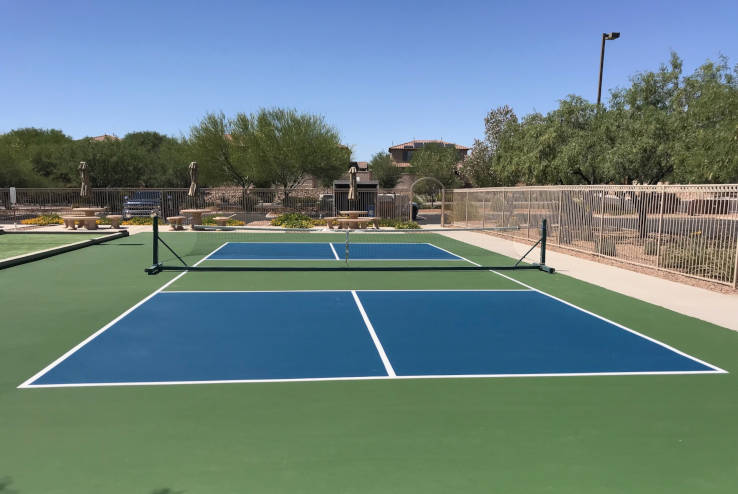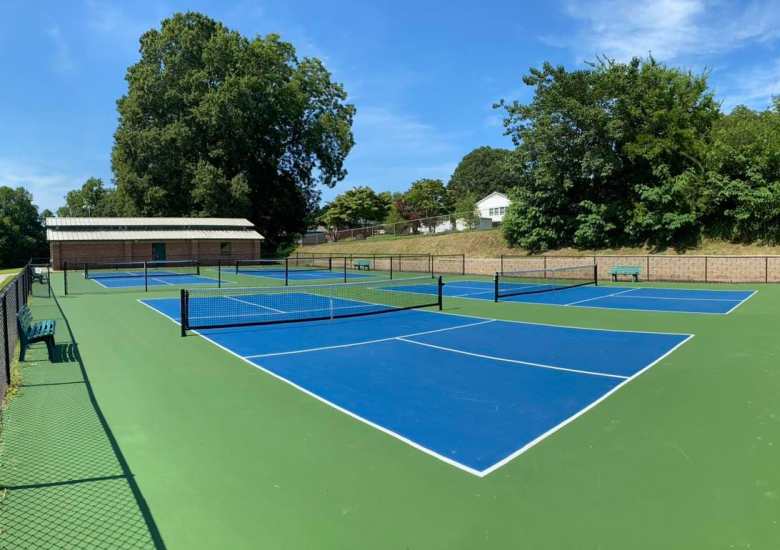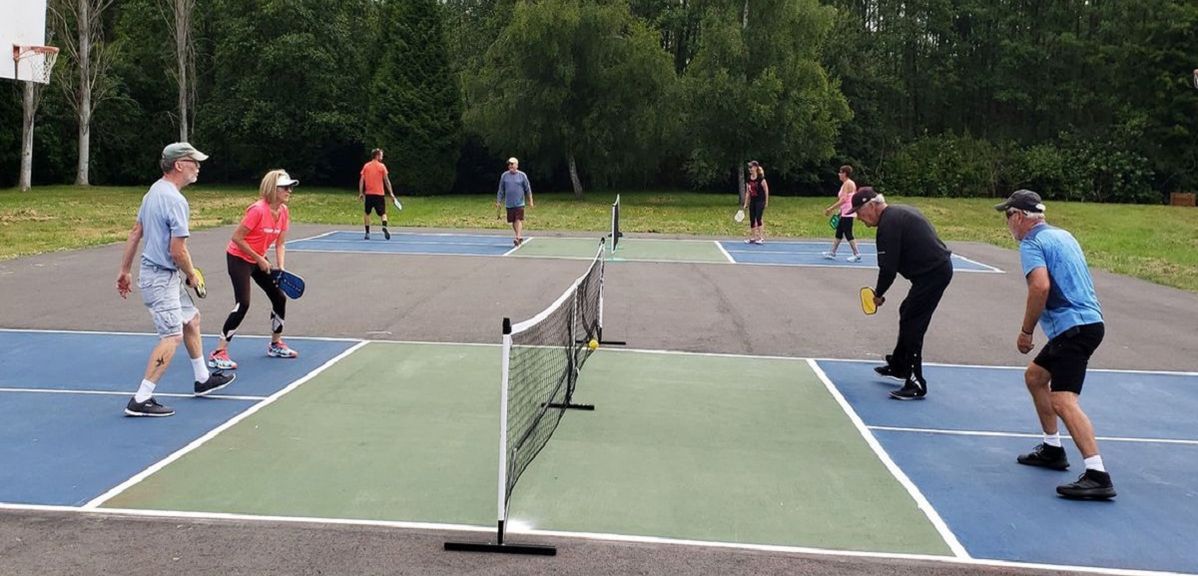Common Mistakes to Avoid in Your Pickleball Court Construction Process
Common Mistakes to Avoid in Your Pickleball Court Construction Process
Blog Article
Navigating Laws for Pickleball Court Building And Construction in Your Location
Building a pickleball court in your location requires a nuanced understanding of different neighborhood regulations, including zoning regulations, structure licenses, and safety standards. Involving with local authorities and the community is crucial for ensuring compliance and cultivating support.
Recognizing Regional Zoning Laws
When thinking about the building and construction of a pickleball court, understanding regional zoning legislations is vital to guaranteeing compliance and staying clear of potential legal issues. Zoning regulations determine just how land can be utilized and usually consist of requirements associated to leisure facilities. These legislations can differ considerably by district, affecting elements such as court placement, noise, size, and lights levels.
Before starting building, it is necessary to get in touch with the local zoning board or preparation division to ascertain the particular regulations that relate to your home. Specific zones may limit recreational tasks, while others may require particular permits or adherence to specific standards. It is also important to think about problems, which identify how far structures should be from home lines or other buildings.
Additionally, personal advancements, such as property owner associations (HOAs), may enforce their own policies pertaining to the building and construction and use pickleball courts. Understanding these policies can stop expensive modifications or lawsuits down the line. Engaging with local stakeholders and community participants can offer beneficial insights and foster assistance for your project, guaranteeing that it aligns with the community's needs and assumptions.
Getting Necessary Building Permits
How does one navigate the complexities of obtaining needed structure licenses for a pickleball court? Commonly, you will need to submit a comprehensive website plan that describes the recommended court measurements, materials, and format.

As soon as licenses are gotten, it is vital to follow any kind of evaluation timetables and demands throughout the construction phase. Preserving communication with regional authorities will assist in a smoother approval procedure and help prevent potential setbacks. By thoroughly preparing and comprehending the allowing landscape, you can efficiently navigate the intricacies associated with creating a pickleball court while staying compliant with all regional laws.

Assessing Environmental Influence
A thorough evaluation of environmental influence is crucial when planning the building of a pickleball court. This evaluation aids recognize prospective results on neighborhood ecological communities, water resources, and area aesthetics. Secret elements to think about consist of site choice-- making sure that the court is not improved environmentally delicate land, such as marshes or habitats for endangered types
Soil stability and drain patterns ought to be evaluated to avoid disintegration and water pooling, which could negatively influence bordering plant life and wild animals. In addition, the choice of products is important; opting for lasting and green options a fantastic read lessens environmental harm.
The execution of reliable stormwater management methods is one more important element, as it aids reduce runoff and sedimentation. Involving with local ecological agencies can provide useful understandings into policies and best methods certain to your area.
Finally, area input can be beneficial in comprehending any regional environmental problems and cultivating support for the project. By conducting a comprehensive ecological impact evaluation, stakeholders can guarantee that pickleball court building and construction lines up with lasting methods and adds favorably to the community's environmental health and wellness.
Abiding By Security Requirements
Making sure compliance with security requirements is vital for the effective construction and procedure of a pickleball court. Complying with recognized safety regulations decreases the threat of crashes and injuries, making sure a safe environment for players.
Secret safety and security standards consist of appropriate court measurements, surface area materials, and illumination needs. The court has to fulfill the official measurements of 20 feet vast by 44 feet long for increases play, with appropriate barrier zones to stop injuries from wayward spheres. Pickleball court construction. The surface needs to be constructed from non-slip materials to improve grip and reduce the chance of drops
Additionally, illumination should be adequate for night play, giving uniform illumination to prevent shadows that can impede visibility. Neighborhood building codes may additionally dictate certain demands for secure fencing and net elevation to guarantee gamer security and avoid unapproved access to the court location.
Normal examinations and maintenance are vital to promote these criteria in time. By focusing on security conformity, court proprietors not only shield players however likewise cultivate a positive reputation within the neighborhood. This dedication to safety can motivate greater engagement and pleasure of the sport, inevitably adding additional hints to its development and sustainability.

Engaging the Neighborhood in Preparation
Area involvement in the drawing board of pickleball court building and construction can substantially improve the project's general success. Involving regional homeowners and stakeholders promotes a feeling of possession and motivates collaborative decision-making, which can bring about more comprehensive support for the campaign.
To efficiently involve the community, coordinators should initiate public conferences or workshops, providing a system for citizens to articulate their point of views and preferences pertaining to location, design, and features. Studies and feedback forms can also be used to gather insights from a wider audience, making certain that varied point of views are taken into consideration.
Furthermore, developing a community board of advisers can promote continuous conversations and address worries throughout the preparation procedure. This board can consist of representatives from various demographics, such as local institutions, recreational organizations, and neighborhood watch, consequently intensifying area depiction.
Effective communication is key; updates about the project should be consistently shared using newsletters, social media, or local publications. By focusing on community involvement, coordinators can grow excitement, minimize potential opposition, and develop a pickleball facility that genuinely resonates with local values and demands. This collective technique not just improves the job however also reinforces area ties.
Final Thought
In verdict, browsing the intricacies of pickleball court building requires a detailed understanding of local policies, including zoning regulations, building licenses, and safety criteria. By adhering to these standards and fostering collaboration, effective execution of pickleball courts can be achieved, promoting entertainment opportunities and neighborhood health.
Creating a pickleball court in your location calls for a nuanced understanding of numerous local guidelines, including zoning legislations, building authorizations, and safety requirements.When considering the construction of a pickleball court, recognizing you can look here local zoning laws is crucial to making certain compliance and staying clear of prospective legal issues. By extensively preparing and understanding the allowing landscape, you can effectively navigate the intricacies entailed in constructing a pickleball court while remaining compliant with all regional policies.
In verdict, browsing the intricacies of pickleball court construction demands a detailed understanding of neighborhood laws, consisting of zoning laws, building permits, and security criteria. By adhering to these standards and promoting cooperation, effective application of pickleball courts can be attained, advertising leisure possibilities and community health.
Report this page